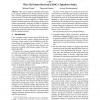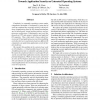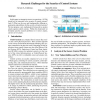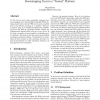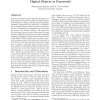USS
2008
14 years 9 months ago
2008
Panic passwords allow a user to signal duress during authentication. We show that the well-known model of giving a user two passwords, a `regular' and a `panic' password...
USS
2008
14 years 9 months ago
2008
We reverse engineer copyright enforcement in the popular BitTorrent file sharing network and find that a common approach for identifying infringing users is not conclusive. We desc...
USS
2008
14 years 9 months ago
2008
Complexity in commodity operating systems makes compromises inevitable. Consequently, a great deal of work has examined how to protect security-critical portions of applications f...
USS
2008
14 years 9 months ago
2008
In this paper we attempt to answer two questions: (1) Why should we be interested in the security of control systems? And (2) What are the new and fundamentally different requirem...
USS
2008
14 years 9 months ago
2008
We present an automated, scalable, method for crafting dynamic responses to real-time network requests. Specifically, we provide a flexible technique based on natural language pro...
USS
2008
14 years 9 months ago
2008
For the last few years, many commodity computers have come equipped with a Trusted Platform Module (TPM). Existing research shows that the TPM can be used to establish trust in th...
USS
2008
14 years 9 months ago
2008
Remote error analysis aims at timely detection and remedy of software vulnerabilities through analyzing runtime errors that occur on the client. This objective can only be achieve...
USS
2008
14 years 9 months ago
2008
As the Internet grows and network bandwidth continues to increase, administrators are faced with the task of keeping confidential information from leaving their networks. Today�...
USS
2008
14 years 9 months ago
2008
Security proponents heavily emphasize the importance of choosing a strong password (one with high entropy). Unfortunately, by design, most humans are apparently incapable of gener...
USS
2008
14 years 9 months ago
2008
Provenance describes how an object came to be in its present state. Intelligence dossiers, medical records and corporate financial reports capture provenance information. Many of ...

